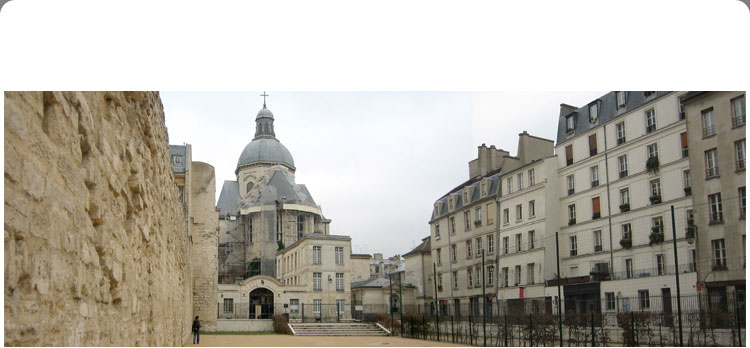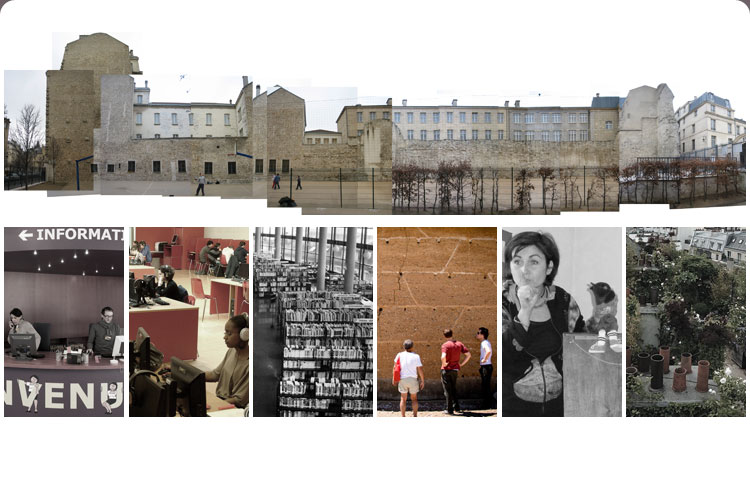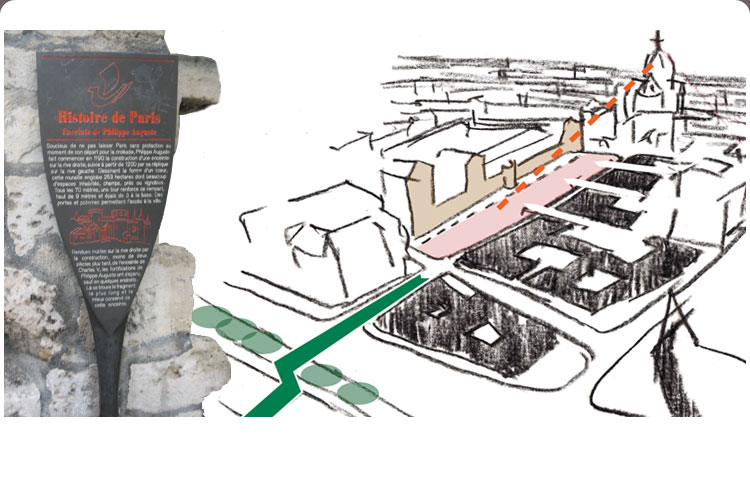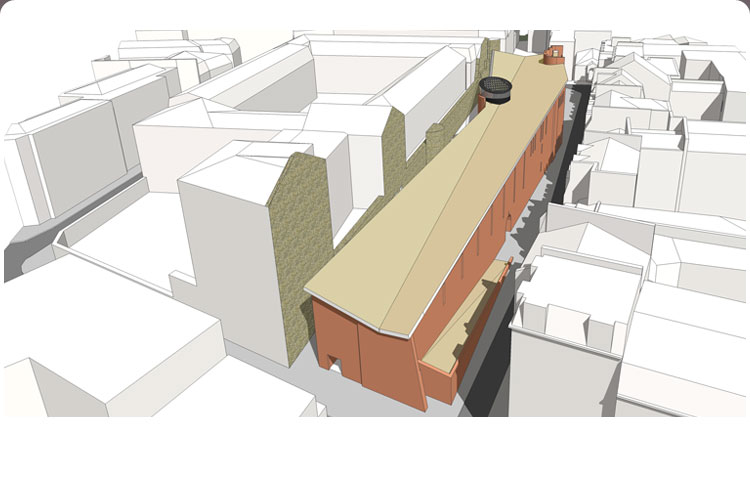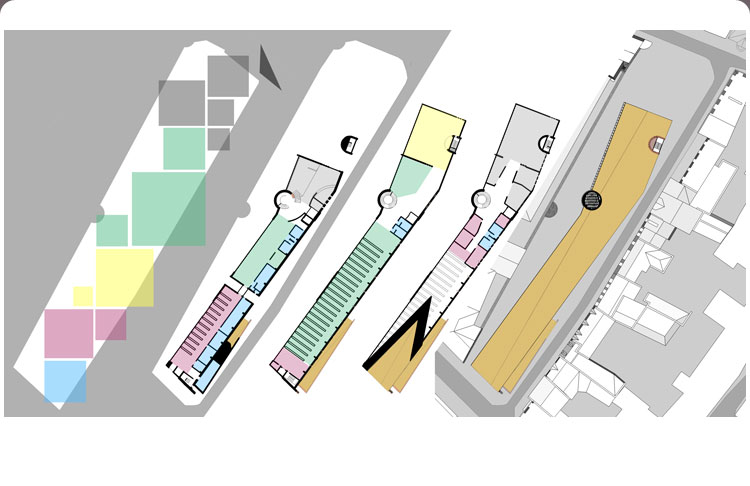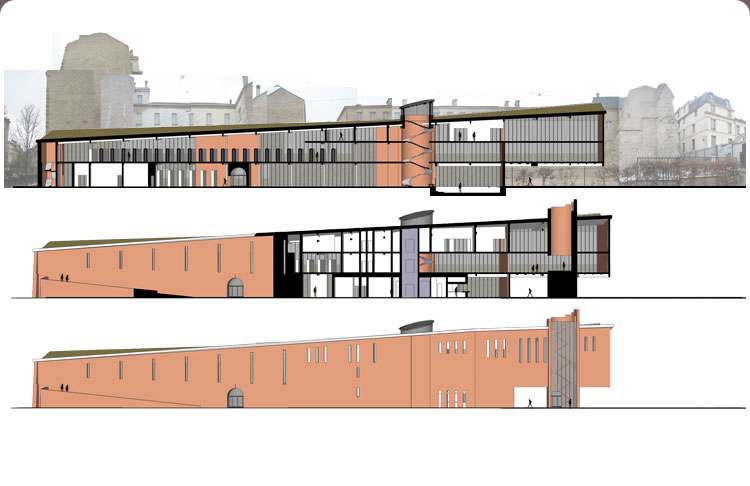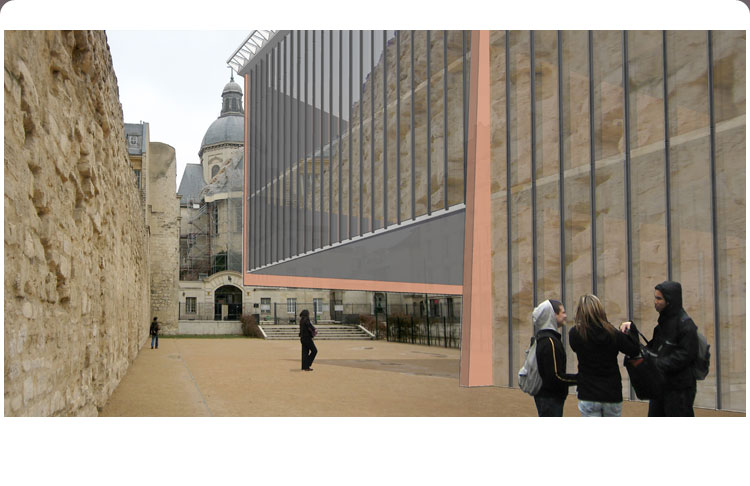Sited along the largest remaining span of a 13th Century wall, Paris’ Mediathèque Saint-Paul examines contemporary contextual connectivity - where roles of location and information blur together. The 10,000-square-meter building combines historic, technological, and environmental considerations.
The site, vacant since the mid-40’s, could suit a narrow building hosting the functions of a community of artists, scholars and tourists. The mediatheque shall be organized with adult, research, and children sections, with a vocabulary at once acknowledging of the area’s rich history while providing the services needed for intellectual growth in the 21st Century.
As with much of central Paris, the Marias’ rich history has been appropriated for use by the contemporary city. A middle school has annexed the complex behind the wall (Enceinte); artists exhibit in courtyards across the street; St. Paul’s looms like a wayward moon; the Seine just there; flats, stuffed into nearly every building.
The Mediatheque proposes a center putting history in context, and responding very respectfully to established access points to existing landmarks. It pulls away from the Wall, and slopes to the water, an echoing semi-solid edifice carried by a faceted, site-sourced rammed earth wall.
The program arranges different use spaces such that parts of the Mediatheque may be closed off after hours for special functions. Welcome spaces (gray) include info desk, Internet kiosks, study and multipurpose rooms; adult section (green) includes periodicals and research; youth and story spaces (yellow); internal and stock room (red); technical (blue).
Transverse sections.
The side facing the Enceinte is almost entirely clad in a semi-reflective glass, simultaneously reinforcing and disintegrating the strength and presence of the site’s great history, and suggesting other, more ephemeral means of interpreting reality.

